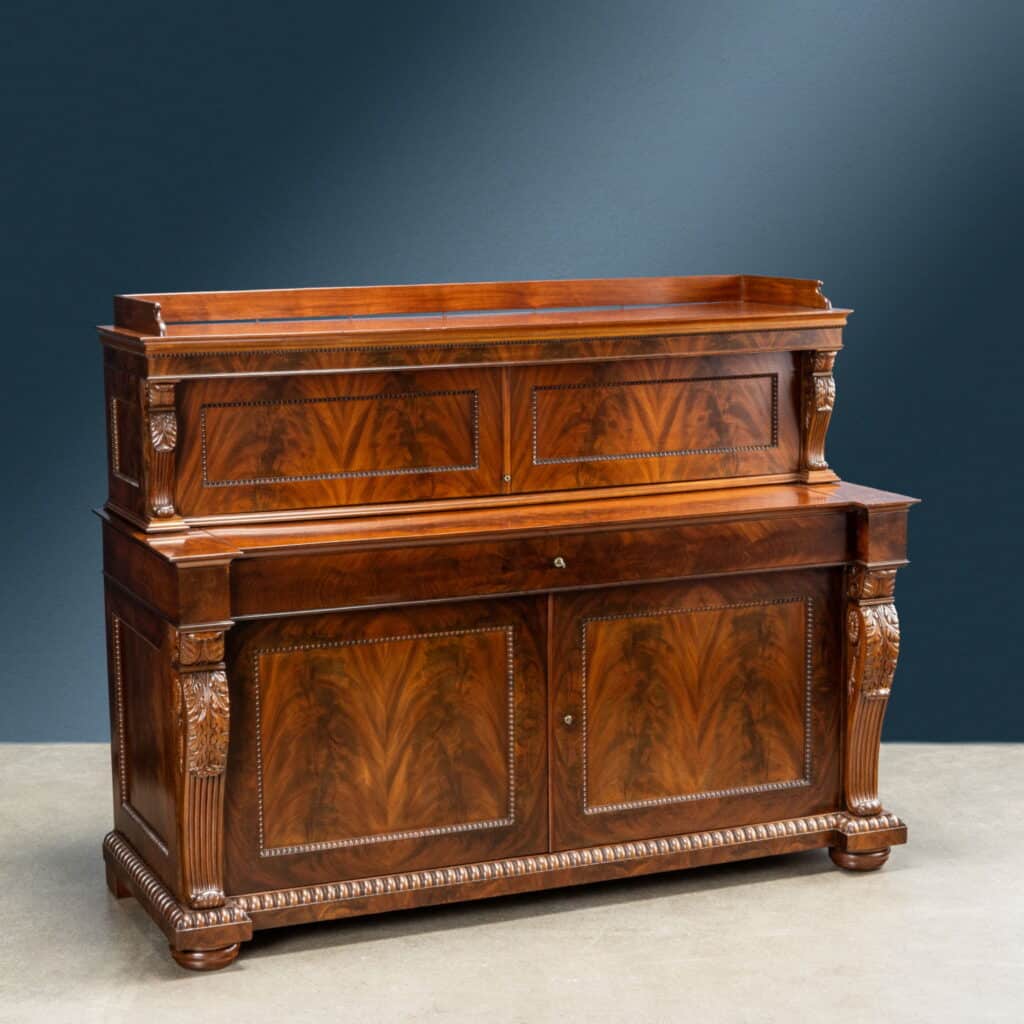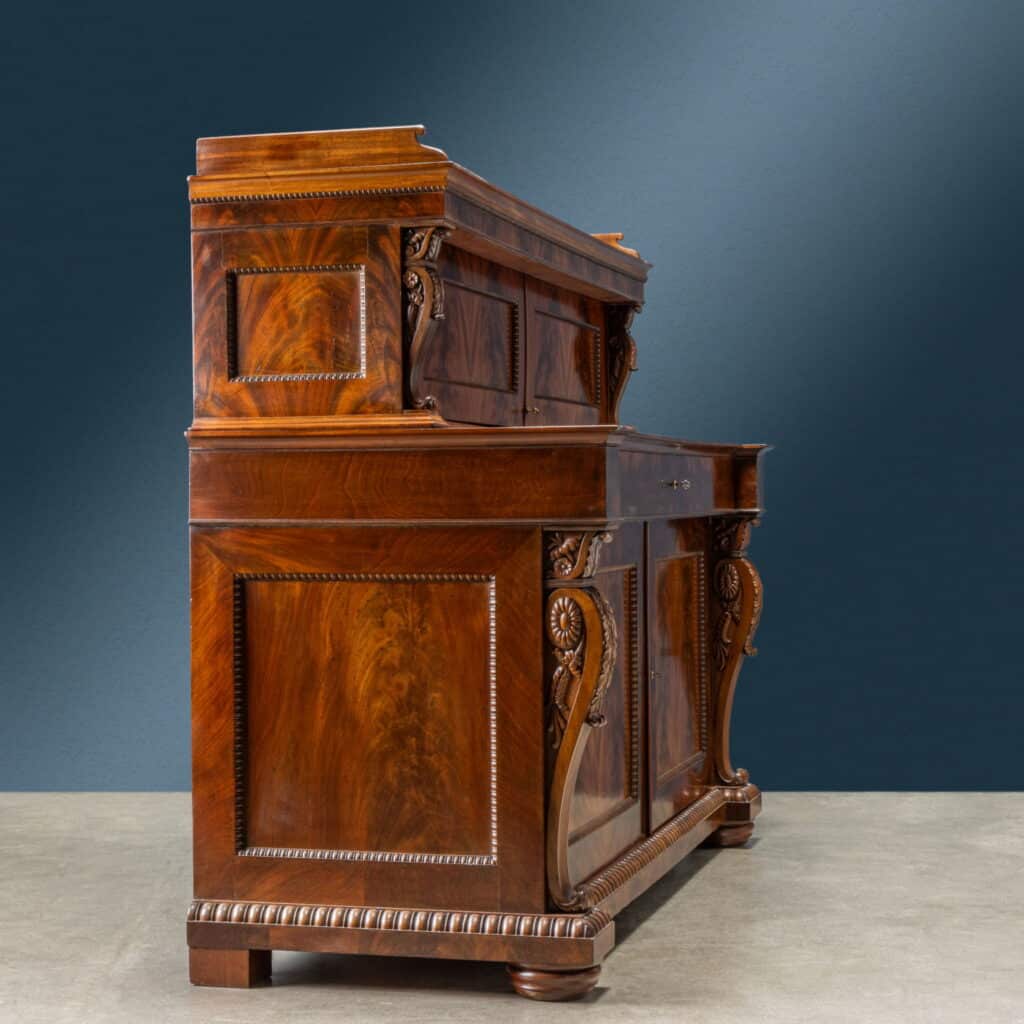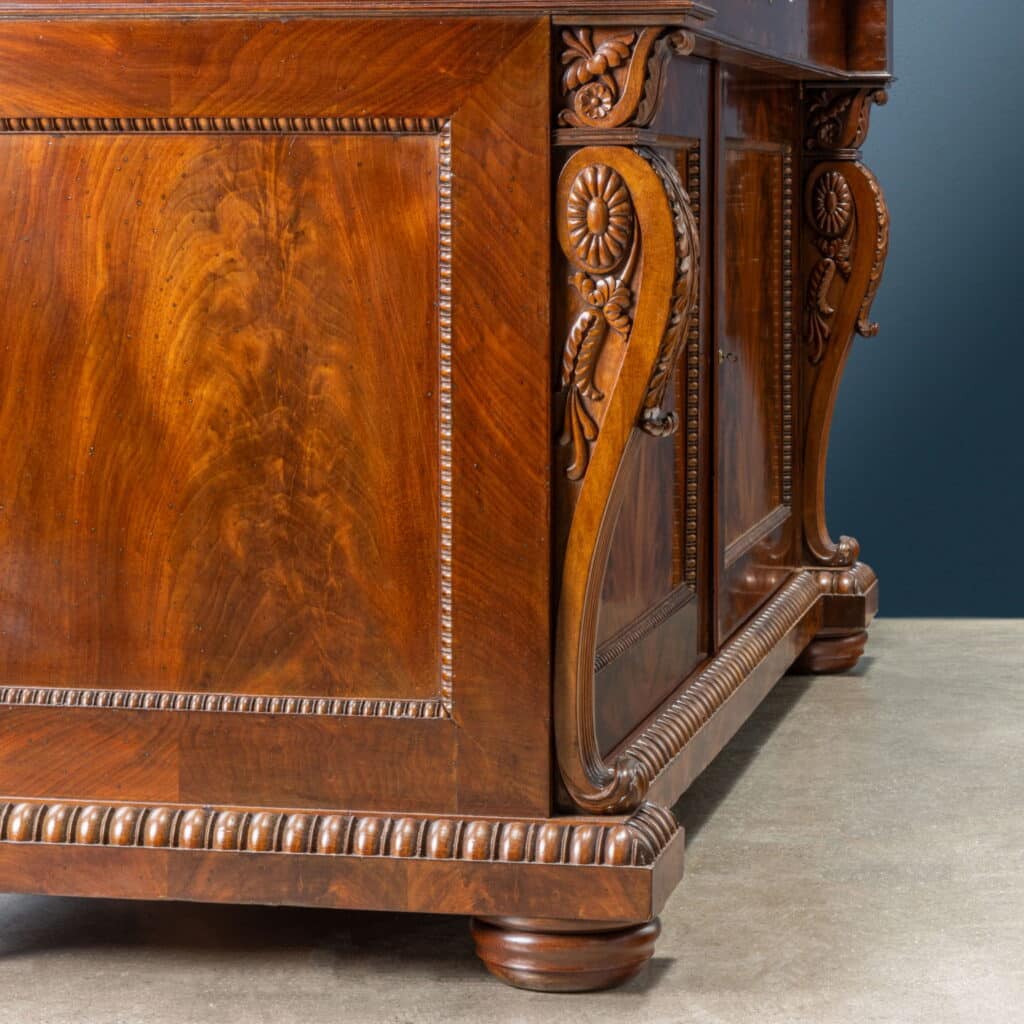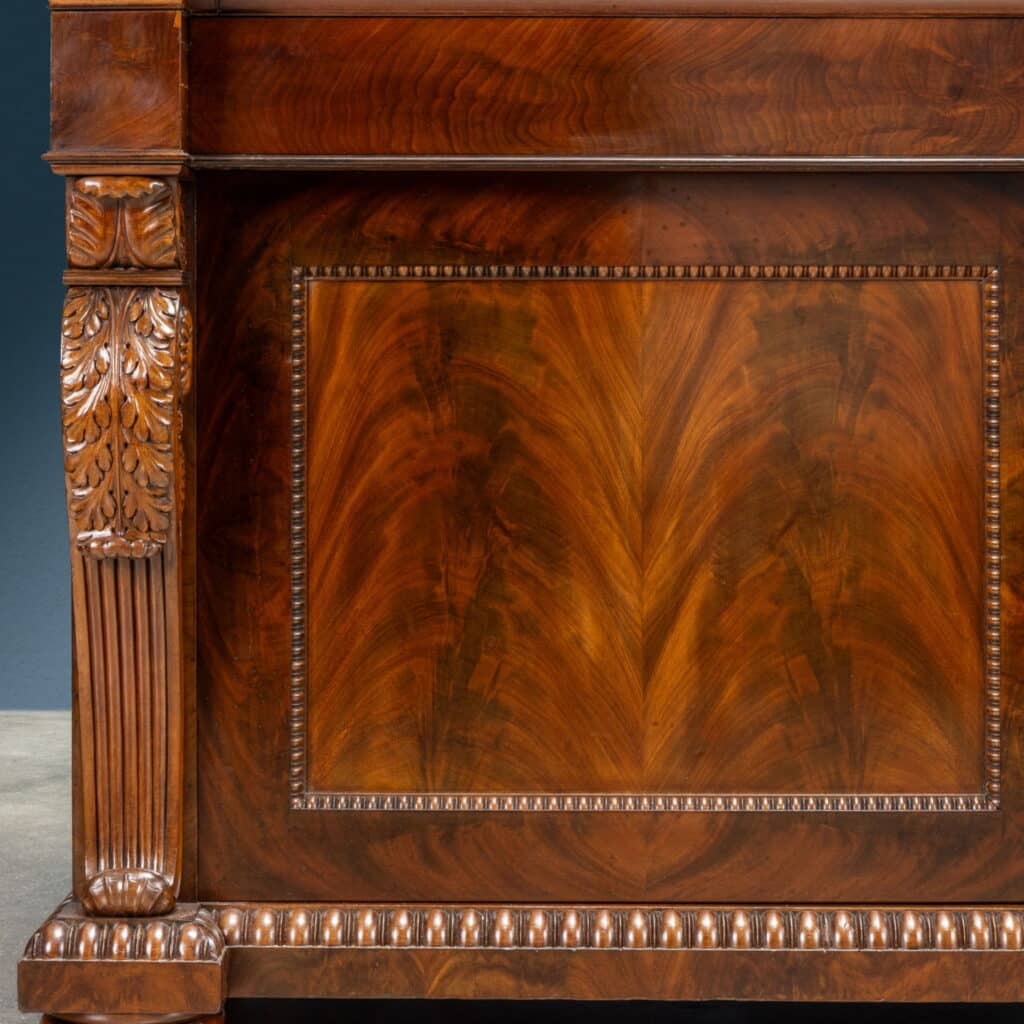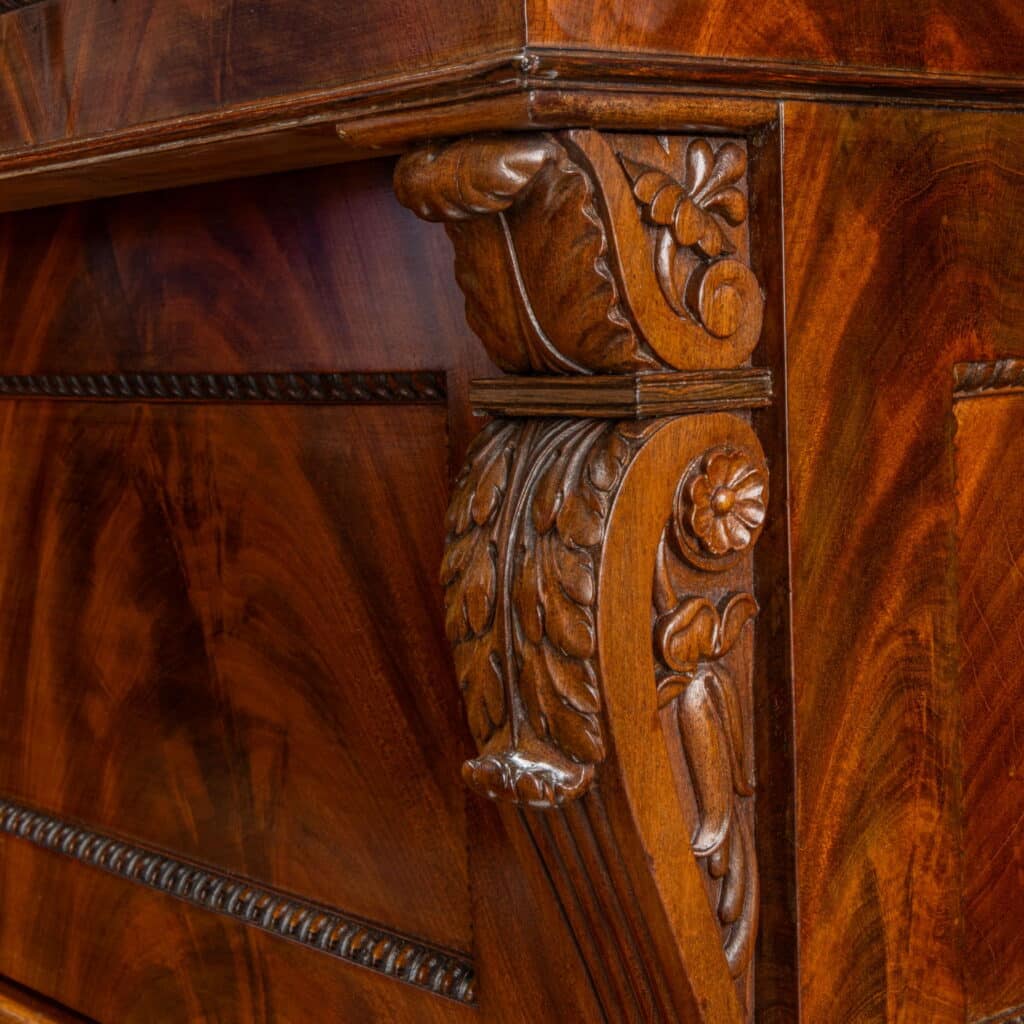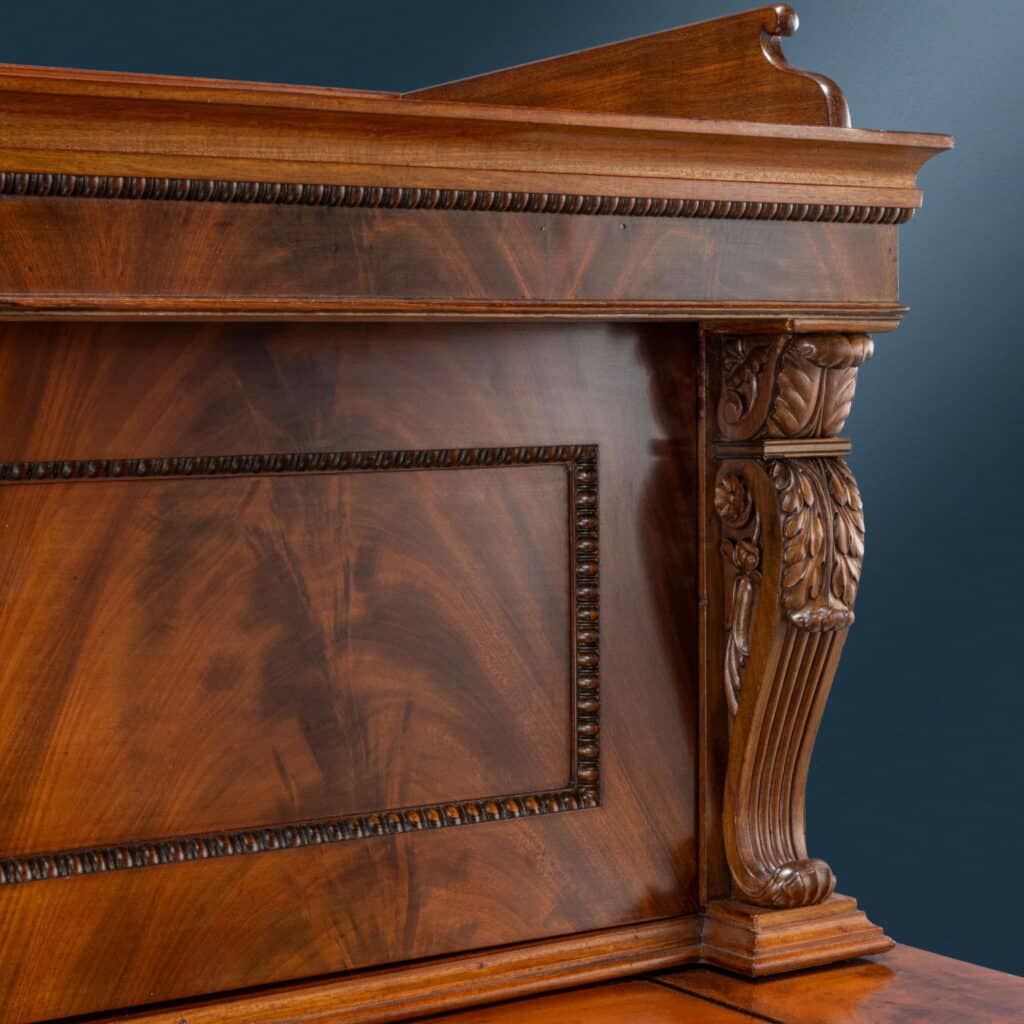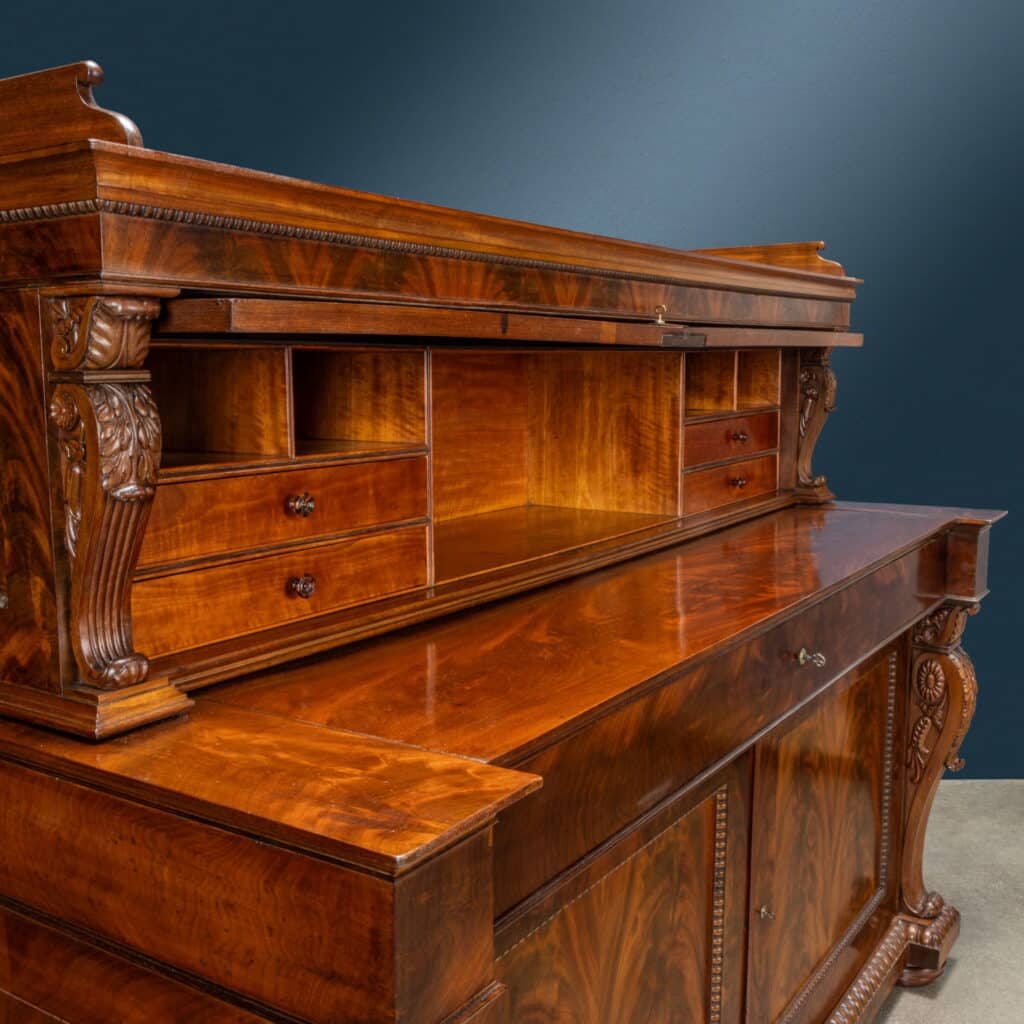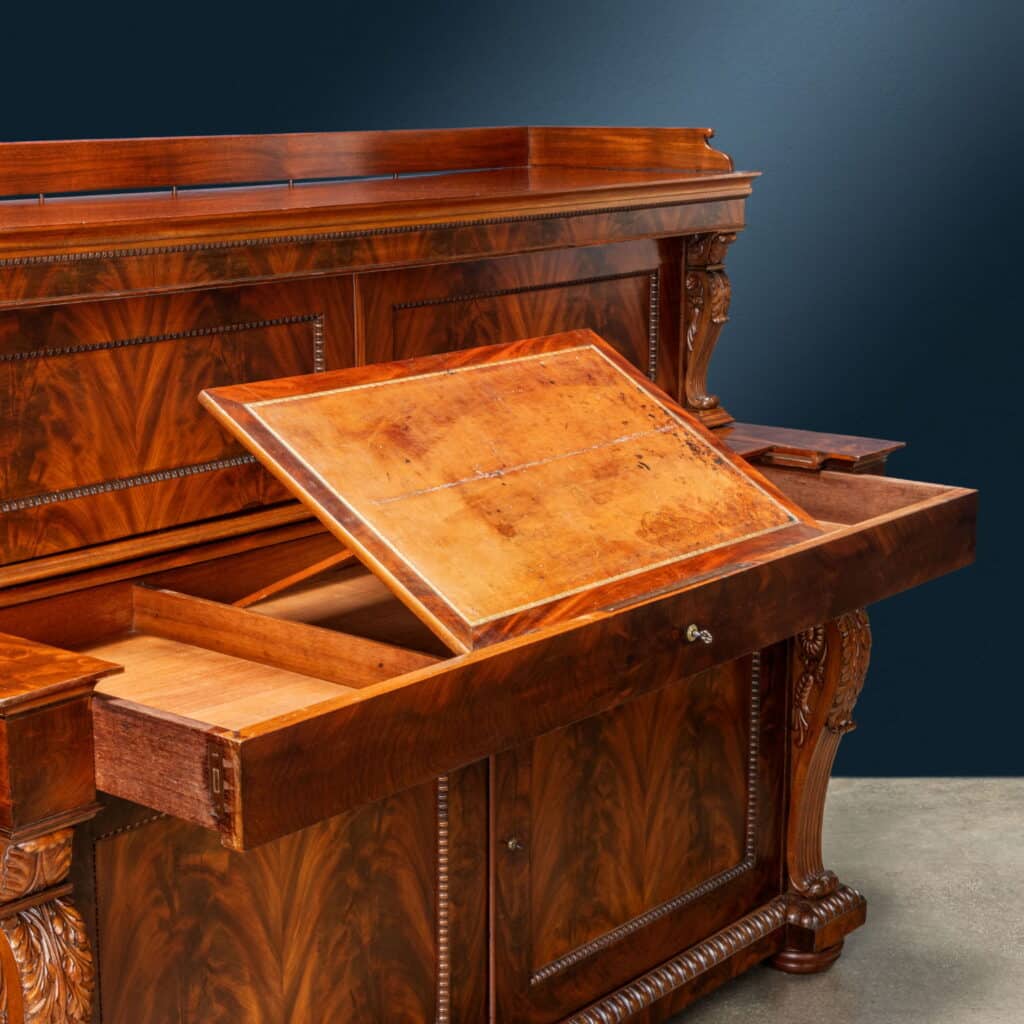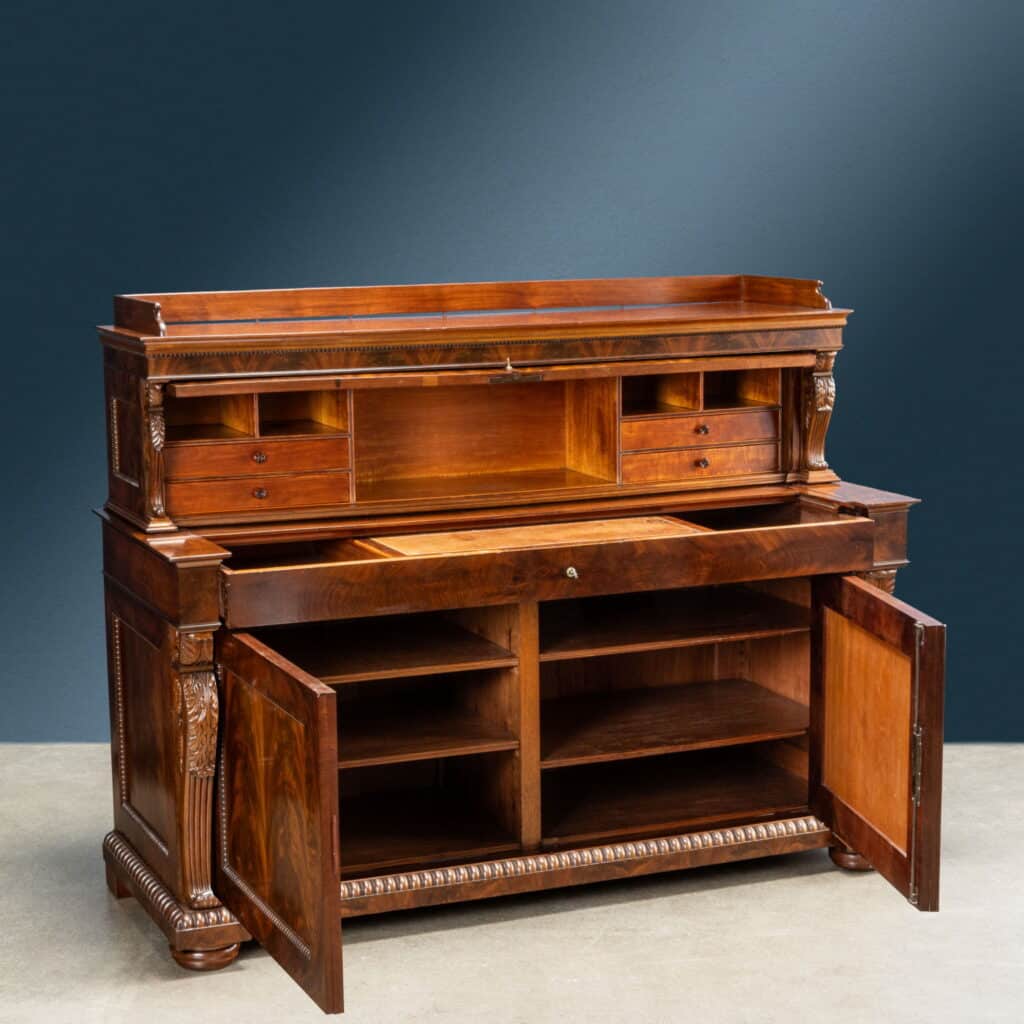Writing Desk, Henry Thomas Peters. Genoa, 1840 ca.
Henry Thomas Peters (attributed to)
Description:
The cabinet, which is entirely refined on the back too, is entirely veneered in mahogany feather and embellished with finely carved mahogany mouldings and pilasters. It has two doors overlaid by an under-top drawer with an adjustable internal bookcase and a morocco leather insert. On the sliding top there’s an upper part with door concealing document compartments and four drawers with turned mahogany and ebony knobs; the top of is shaped like a wooden balcony. The frame is made of oak and cherry; the steel iron locks are marked ‘F.VAGO Milan’.
Dimensions: 128 x 163 x 66.5 cm
CODE: ANMOCR0104188
Historical-stylistic analysis:
This intricate piece of furniture was part of a library furnishing attributable to the cabinetmaker Henry Thomas Peters. Of English origin, he moved his business to Genoa in 1817; together with Gabriele Capello, he was employed by architect Pelagio Palagi for his commissions at the Savoy court. For this reason, his production is characterised by ornamental motifs derived from the ‘Palagi’ taste, while characteristic of his English training is his predilection for the use of mahogany and the creation of functional furniture.
In this furniture, the cabinetmaker’s virtue emerges in the quality of execution, in the interlocking of the drawers and in the skilful use of mahogany feathers, but above all in the refinement of the carving, a distinctive feature of his production.
While it is true that there is no lack of signed furniture with this type of carving, the piece of furniture with the most points of contact with the one in the description is another desk that Peters made for King Charles Albert, preserved at the Royal Castle of Racconigi. This piece of furniture is larger than ours, with a convex centre and some parts in mahogany briar in addition to the more usual feather, but some solutions reappear punctually. Not only the pilaster strips but the top, with its central flap door and first Vago lock, and also the drawers inserted in the frame underneath with the sliding top, leave no doubt as to the same authorship of the two pieces of furniture.
Bibliography:
-Noemi Gabrielli, Racconigi, Istituto Bancario San Paolo di Torino, Torino, 1972;
-Roberto Antonetto, Gabriele Capello “Moncalvo”. Ebanista di due re; Umberto Allemandi & C., 2004;
-Antonella Rathscüler, Henry Thomas Peters e l’industria del mobile nell’Ottocento, Il canneto editore, Genova, 2014.
- Writing Desk, Henry Thomas Peters. Genoa, 1840 ca.

Antiques, Art and Design
FineArt is the new ambitious Di Mano in Mano project that offers an exclusive choice of antiques and design works, presenting them for their singularity and uniqueness.

